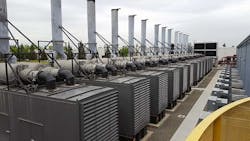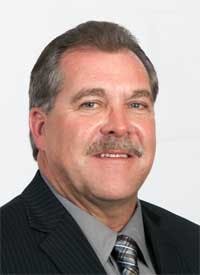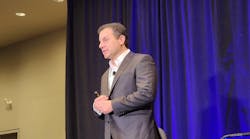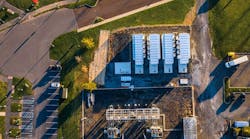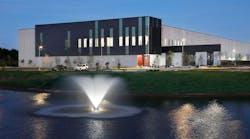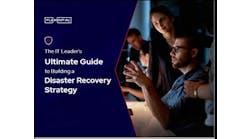Today we continue our Data Center Executive Roundtable, a quarterly feature showcasing the insights of thought leaders on the state of the data center industry, and where it is headed. In today’s discussion, our panel of experienced data center executives – Aligned Energy CEO Andrew Schaap, Shay Demmons of RunSmart, FORTRUST COO Robert McClary, and Bob Woolley of RagingWire Data Centers – address the need for continuing innovation in data center electrical design and infrastructure.
The conversation is moderated by Rich Miller, the founder and editor of Data Center Frontier.
Data Center Frontier: What interesting trends are you seeing in data center power? Is there still room for innovation in data center electric infrastructure?
ROBERT WOOLLEY. RagingWire Data Centers
Robert Woolley: One of the most significant trends in data center power is the continued improvement in the design of electrical distribution equipment to improve worker safety. In addition to arc resistant features such as arc chutes, switchgear is now typically produced with isolated control compartments that allows test access to meters, relays and terminal blocks. Remote racking, remote switching and IR windows enable workers to maintain safe distances from arc flash hazards. Panel boards are now available with finger safe features that allow the safe installation of circuit breakers. Combined with more stringent electrical safety rules and awareness on the part of data center operators, these improvements have materially decreased the risk of operating and servicing the electrical systems.
Another trend is the gradual acceptance of lithium-ion (Li-ion) batteries as an alternative to VRLA (valve-regulated lead-acid). Prices for Li-ion batteries have been steadily decreasing to the point that, while still a higher initial cost, Li-ion is beginning to look very attractive in terms of TCO (total cost of ownership).
Li-ion also has a favorable footprint and weight advantage over traditional battery systems. It’s safe to say that Li-ion battery prices will continue to drop as the technology and chemistry improves, and production volume increases.
A lingering issue with Li-ion is the perception of fire and explosion risk, due to well publicized failures in consumer goods and certain commercial applications. Li-ion will face an uphill battle to overcome these concerns in the risk-adverse data center industry, but a good record of performance and an increasingly favorable cost/benefit should ultimately lead to widespread adoption of the technology.
Robert McClary, FORTRUST
Robert McClary: Absolutely yes. There’s not only room for innovation, there’s a need for it. We need to start thinking of better ways to provide uninterruptible power to the critical loads in the data center. We also need to be thinking of things that are more environmentally sound in the data center electrical infrastructure.
Let’s start thinking about getting rid of the toxic materials that electrical infrastructure has in the traditional uninterruptible power supply components, specifically lead and sulphuric acid associated with traditional battery technology. Let’s look at different types of electrical designs that would optimize the data center real estate, but also eliminate the toxic chemicals that are found in battery systems.
There’s also room for air quality in data centers to improve. Air quality directly affects the electrical infrastructure and the hardware that is housed in the data center. It is something we should be looking at to allow for longer lifecycle of the electrical components and computer hardware inside the data center.
SHAY DEMMONS, RunSmart
Shay Demmons: Much like in other areas of the data center, trends in power are centered around reducing the cost of operation, maximizing efficiency, and reducing waste. While renewable energy and energy storage are popular leading-edge trends that are being adopted coincident with major cost savers like peak shaving, load shifting, and demand response, these technologies themselves remain extremely expensive with multiple decade ROIs. As a general rule, green energy is expensive energy.
The most exciting and attractive innovations in energy management are the ones that utilize the existing assets of the data center to intelligently reduce cost. With the right DCIM tool integrated into the data center IT and infrastructure levels, data centers can take a step past capacity planning and start performing real-time capacity management. The software-defined data center should tell you how much power you need, match it with utility rates and schedules, and make cost cutting suggestions with estimated savings. Examples of this include postponing non-critical jobs, pushing work to a cheaper location or the cloud, or using generators to shave peak load or lower energy during peak times.
DCIM technology has been maturing for more than a decade and is now available to any organization that desires to think strategically about cost savings and business continuity. It is safe to say that while evolutionary changes to various technologies will continue to occur, the biggest opportunity towards service delivery excellence will come from improving operations, reducing human error, and applying software-defined principles to the manual processes which abound in a data center or colocation facility. The software-defined data center needs to be able to understand the goals of the operator, the points of data to make decisions and then dynamically determine the best course of action based on hundreds or thousands of metrics.
ANDREW SCHAAP, Aligned Data Centers
Andrew Schaap: There is always room for innovation, especially in data center power, because innovation is all about efficiency. It’s an important initiative for our industry collectively to come together and identify new solutions to help make data centers more energy efficient. Based on current trend estimates, data centers are projected to consume approximately 73 billion kWh in 2020. The good news is that we have made a lot of progress in the last few years.
At Aligned Energy, we are looking for ways to innovate at all levels within our electrical and mechanical infrastructure. As our growing market continues to consume natural resources in order to operate, you will continue to see innovation happening at every level inside the data center.
NEXT: Our Panel Discusses Multi-Cloud Strategies
Keep pace with the fact-moving world of data centers and cloud computing by following us on Twitter and Facebook, connecting with me on LinkedIn, and signing up for our weekly newspaper using the form below:
